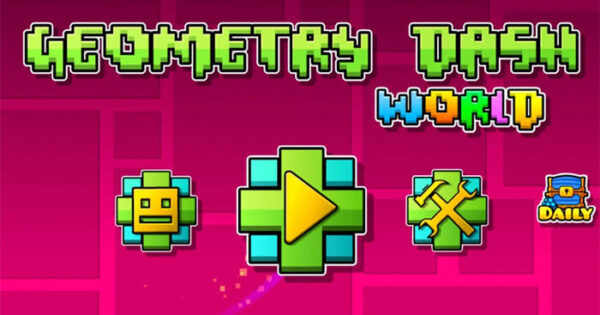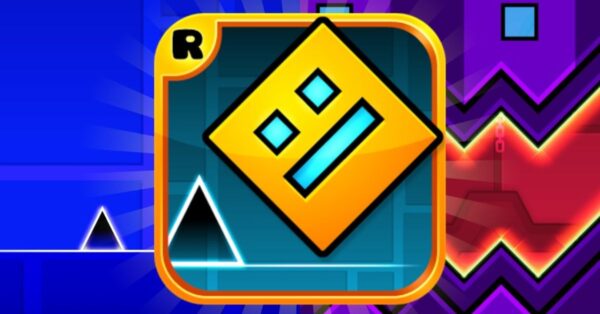Popular Now
Introduction
Geometry Dash is a game of patterns, rhythm, and razor-sharp timing. But for many players, the real challenge isn't just beating a level once—it's doing it consistently, especially as the difficulty increases. Intermediate players often find themselves stuck: they can reach 70%–90% in hard levels but rarely finish them. If that sounds like you, this guide is for you. Here, we’ll focus on how to improve consistency, eliminate “choke points,” and make steady progress toward mastering Hard, Harder, Insane, and Demon-rated levels.
1. Understand What Consistency Really Means
Consistency in Geometry Dash is about being able to pass the same parts of a level over and over with minimal mistakes. It’s not just about luck or one good run—it’s about predictability and repeatable success.
Why is consistency important?
-
It reduces the number of attempts needed.
-
It helps you learn from mistakes more effectively.
-
It prepares you for longer, more demanding levels.
If you're getting stuck at random points in a level each time, it means you haven’t yet built reliable habits. This guide will help you do just that.

2. Identify Your Weak Spots Early
The first step to becoming consistent is knowing where you're not consistent. Play through the level in Practice Mode and take note of the sections where you frequently die. These are your weak spots.
Here’s how to analyze weak areas:
-
Watch your own replays (in Practice or Normal Mode).
-
Count how many attempts it takes to pass specific parts.
-
Pay attention to form changes (e.g., wave to UFO) that disrupt your rhythm.
By identifying problem areas early, you can target them directly instead of wasting time replaying easy parts.
3. Use Micro-Checkpoints in Practice Mode
Practice Mode allows manual checkpoint placement—use this to your advantage. Place checkpoints right before and after hard jumps, transitions, or speed portals. Then replay just those sections until you can beat them 10 times in a row without error.
Benefits of micro-practice:
-
Builds muscle memory faster.
-
Eliminates randomness.
-
Gives your brain more “reps” with the hardest content.
Once you're confident in the segment, test it again in a longer Practice Mode run to ensure you can integrate it smoothly into the full level.
4. Establish Entry and Exit Cues
One trick many experienced players use is to create "cues"—visual or audio signals that indicate what’s coming next. These can be:
-
A bass drop in the music that signals a jump.
-
A specific block design that warns of a tight wave corridor.
-
A flash or portal before a gravity change.
Once you learn to recognize these cues, you can prepare mentally before difficult sections. This dramatically increases consistency because you're reacting proactively instead of being surprised.

5. Master One Level at a Time
Trying to beat multiple levels at once splits your focus. Instead, choose one level that is slightly above your current skill level and stick with it until you complete it. This builds discipline and lets you push through fatigue, frustration, and difficulty spikes.
Why this works:
-
You internalize the rhythm and patterns of one level more deeply.
-
You reduce time spent “relearning” sections.
-
You develop stronger muscle memory.
Don’t jump from level to level when you get stuck. Commit to seeing one through and the payoff will be huge.
6. Create Daily Progress Goals
Breaking your practice into small, measurable goals keeps you motivated. Instead of saying “I’ll beat this Demon level today,” aim for things like:
-
Reach 40% in Normal Mode.
-
Survive the wave section 5 times in a row.
-
Beat the level in Practice Mode without dying once.
Use a notepad or checklist to track progress over several days. Improvement isn’t always obvious in the short term, but when tracked, you’ll see patterns of growth over time.
7. Reduce External Distractions and Optimize Settings
Consistency isn't just about what's happening in the game—it's also about your environment. Distractions and poor device settings can kill even your best runs.
Here are quick wins:
-
Turn off notifications or play in Do Not Disturb mode.
-
Use headphones to isolate game audio cues.
-
Adjust graphics settings to reduce lag.
-
Lower effects and turn off screen shake.
A clean, focused setup helps you perform at your best. One small lag spike can ruin a perfect run, so don't let technical issues hold you back.

8. Warm Up with Easier Levels
Before diving into a hard or Demon level, spend 10–15 minutes warming up. Choose a level that’s one or two stars easier than your target and play it 2–3 times.
Warm-up helps in several ways:
-
Gets your reflexes ready.
-
Gets your fingers and eyes in sync with game speed.
-
Builds early confidence for your real goal.
Don’t underestimate the psychological effect of a good warm-up. Players who do this tend to enter hard levels in a more focused, alert state.
9. Watch Top Players and Analyze Their Runs
There’s a lot to learn from watching how expert Geometry Dash players approach levels. Look for things like:
-
Where they click during transitions.
-
How they align their ship or wave in tight corridors.
-
When they tap lightly vs. hold firmly.
YouTube is full of walkthroughs, slow-motion playbacks, and commentary videos. Don’t just watch to be entertained—watch to learn. Try mimicking their timing, movement, and even finger technique.
Bonus tip: Play their replays side-by-side with your own to see where you're off.
10. Learn to Handle Late-Level Pressure
One of the hardest things in Geometry Dash is maintaining focus when you get close to the end of a level. Your hands get sweaty, your heart races, and suddenly—bam!—you die at 96%. We've all been there.
The key is mental control:
-
Don’t think “I’m about to beat it”—think “Just another section.”
-
Practice the final 20% over and over until it’s automatic.
-
Take breaks after deep runs to stay mentally fresh.
Over time, your brain learns to treat the end of the level like any other part. With enough reps, pressure starts to fade and consistency increases.
Conclusion
Becoming consistent in Geometry Dash is about more than just playing a lot. It requires smart practice, strategic use of tools like Practice Mode, and a deep understanding of your own weak points. Whether you're trying to beat your first Harder level or attempting your first Demon, the strategies above will help you get there.
Focus on mastering one level at a time, break it into pieces, and set achievable goals. Watch how others do it, control your play environment, and manage your nerves in high-pressure moments. Most of all—don’t give up. Improvement in Geometry Dash isn’t linear, but it is inevitable if you keep pushing forward.

















